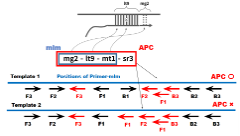VOLUME 17 NUMBER 2 (July to December 2024)

SciEnggJ. 2024 17 (2) 202-244
available online: September 17, 2024
DOI: https://doi.org/10.54645/2024172HJB-85
*Corresponding author
Email Address: gercamer@uep.edu.ph
Date received: November 13, 2023
Date revised: April 13, 2024
Date accepted: May 20, 2024
ARTICLE
Development of machine learning algorithm for loop-mediated isothermal amplification including influence of temperature
Rakuno Gakuen University, Ebetsu City, Japan
2MATO Corporation Exis Building 4F, 5-26-22 Higashio,
Shinagawa-ku, 140-0011, Tokyo, Japan
3Kasai Home Care Clinic, TetsuRyuKai Medical Corporation, 101,
8-18-12 Nakakasai, Edogawa-ku, Tokyo,134-0083, Japan
4Research Institute for Advanced Nursing Technology, Osaka
Metropolitan University 1-1 Gakuen-cho Nakaku, Sakai
599-8231, Japan
5Knowledge Connect (sole proprietor) 4jo-7chome Funino,
Minami-ku, Sapporo 061-2284, Japan
6Polytechnic University of the Philippines-College of Science, 1016,
Sta. Mesa, Manila, Philippines
7University of Eastern Philippines-College of Veterinary Medicine,
6400, Catarman, Northern Samar, Philippines
To predict amplification in the Loop-Mediated Isothermal Amplification (LAMP) method, a binary model has been developed. This model assesses whether the combination of partial template binding facilitated by multiple primers aligns with a specific signature indicating amplification. For this model, 1512 settings were adjusted, encompassing variations in the extraction oligomer position from the primer, the oligomer length, the number of allowed mismatched bases, and the stringency of the homology position. The optimal set was determined based on the F1 value at a reaction temperature of 60°C, resulting in a value of 0.58. To implement machine learning by amalgamating multiple models, duplicate models were eliminated through cluster analysis. Machine learning using AutoML was performed on 108 distinct models. Consequently, the F1 values were 0.7119 at a reaction temperature of 60°C and 0.7210 at 68°C. The weak correlation between feature importance and the F1 value of the model alone suggests that machine learning utilizing this model incorporates numerous models to enhance prediction accuracy.
© 2025 SciEnggJ
Philippine-American Academy of Science and Engineering